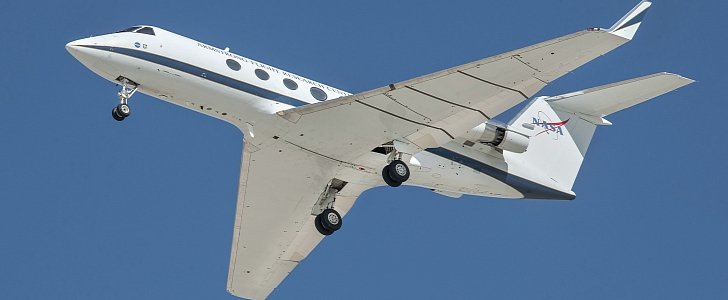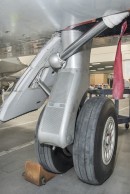Ever since the airplane has become a common sight on the skies of major cities, inhabitants have been complaining about the noise levels.
The Federal Aviation Administration (FAA) says the main public complaint it receives is about aircraft noise. Over the years, the organization has tried everything from imposing stricter noise regulations to even coming up with new flight paths for aircraft approaching cities.
But as cities expand and the number of airplanes increases, there will come a time when not much can be done. To prepare for that moment, NASA is currently working on airplane noise reduction technologies.
The space agency concluded back in May the so-called Acoustic Research Measurement (ARM) test flights, during which it put various airframe components to the test on a Gulfstream III research aircraft.
The components being tested included landing gear fairings, cavity treatments, and the Adaptive Compliant Trailing Edge (ACTE) wing flap. The tests were conducted at an altitude of 350 feet and were recorded by 185-sensor microphones deployed on the Rogers Dry Lake at Edwards Air Force Base in California.
The technologies, says NASA, helped reduce the aircraft’s airframe noise (not that of the engines) by a 70 percent. The ACTE wing flap addressed the noise caused by airflow moving past the landing gear on approach, while the landing gear fairings, riddled with tiny holes, helped deflect part of the air while allowing some to pass through.
“This airframe noise reduction produced by NASA technology is definitely momentous, and the best part is that it directly benefits the public,” said in a statement ARM Project Manager Kevin Weinert.
“While there are obvious potential economic gains for the industry, this benefits the people who live near major airports, and have to deal with the noise of aircraft coming into land. This could greatly reduce the noise impact on these communities.”
A detailed look at the tech being tested by NASA can be found in the document attached below.
But as cities expand and the number of airplanes increases, there will come a time when not much can be done. To prepare for that moment, NASA is currently working on airplane noise reduction technologies.
The space agency concluded back in May the so-called Acoustic Research Measurement (ARM) test flights, during which it put various airframe components to the test on a Gulfstream III research aircraft.
The components being tested included landing gear fairings, cavity treatments, and the Adaptive Compliant Trailing Edge (ACTE) wing flap. The tests were conducted at an altitude of 350 feet and were recorded by 185-sensor microphones deployed on the Rogers Dry Lake at Edwards Air Force Base in California.
The technologies, says NASA, helped reduce the aircraft’s airframe noise (not that of the engines) by a 70 percent. The ACTE wing flap addressed the noise caused by airflow moving past the landing gear on approach, while the landing gear fairings, riddled with tiny holes, helped deflect part of the air while allowing some to pass through.
“This airframe noise reduction produced by NASA technology is definitely momentous, and the best part is that it directly benefits the public,” said in a statement ARM Project Manager Kevin Weinert.
“While there are obvious potential economic gains for the industry, this benefits the people who live near major airports, and have to deal with the noise of aircraft coming into land. This could greatly reduce the noise impact on these communities.”
A detailed look at the tech being tested by NASA can be found in the document attached below.



